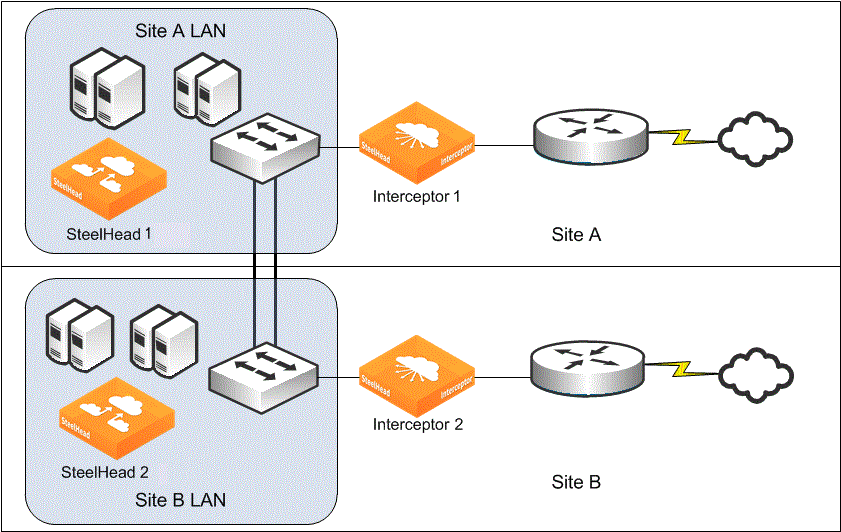Intra-cluster latency
In general, we recommend that the maximum intra-cluster round-trip latency (the round-trip latency between any two members of a cluster between any two Interceptors, or between any Interceptor and SteelHead) be less than 1 millisecond.
You can deploy Interceptors so that some moderate latency exists between members of the Interceptor cluster. Such intra-cluster latency has an impact on the accelerated traffic, because each connection to be accelerated requires communication among all Interceptors in a cluster, to achieve efficient redirection.
The longest round-trip latency between any two Interceptors, or between an Interceptor and a SteelHead, should be less than one-fifth of the round-trip latency to the closest accelerated remote site. This trip time ensures that intra-cluster communication doesn’t cause connection setup time to be greater for accelerated connections compared to nonaccelerated connections for the closest remote site. Deployments with intra-cluster round-trip latencies higher than 10 milliseconds should be implemented only after technical consultation with Riverbed.
Figure: Data center with WAN landing points at separate locations shows a data center with WAN landing points at separate locations. If any TCP flow can be routed asymmetrically across both WAN links, then you can configure the Interceptors at the locations as redirect peers. Any latency between the sites might have an impact on the performance of accelerated connections, and it definitely impacts the time it takes for an accelerated connection to be established.
Data center with WAN landing points at separate locations



